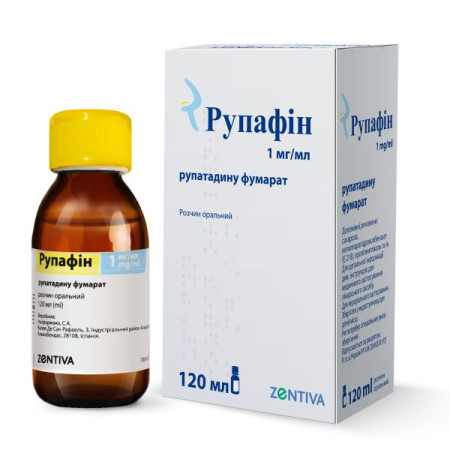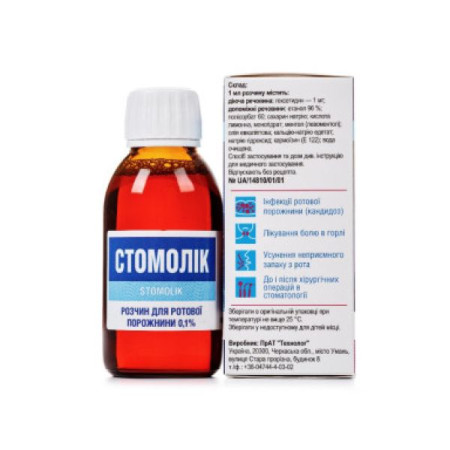Indophthalmic eye drops solution 1 mg/ml bottle 5 ml

Instructions for use: Indophthalmic eye drops solution 1 mg/ml bottle 5 ml
Composition
active ingredient: indomethacin;
1 ml of eye drops, solution contains 1 mg of indomethacin;
excipients: arginine, hydroxypropylbetadex, thiomersal, 1 M hydrochloric acid solution, purified water.
Dosage form
Eye drops, solution.
Main physicochemical properties: greenish-yellow transparent solution, practically free from particles.
Pharmacotherapeutic group
Drugs used in ophthalmology. Nonsteroidal anti-inflammatory drugs.
ATX code: S01B S01
Pharmacological properties
Pharmacodynamics. The drug belongs to the group of nonsteroidal anti-inflammatory analgesics for topical use.
Indomethacin inhibits prostaglandin synthetase and belongs to the indole group of drugs.
Pharmacokinetics: No data.
Indication
- Inhibition of miosis during surgery.
- Prevention of inflammatory processes after cataract surgery or after surgery on the anterior chamber of the eye.
- Elimination of eye pain after photorefractive keratectomy during the first few days after surgery.
Contraindication
- Last trimester of pregnancy (see section "Use during pregnancy or breastfeeding");
- a known allergy to indomethacin or drugs with a similar effect, such as other non-steroidal anti-inflammatory drugs (NSAIDs) or aspirin;
- history of asthma attacks caused by aspirin or other NSAIDs;
- active peptic ulcer of the stomach and duodenum;
- severe hepatocellular disorders;
- severe renal failure.
Interaction with other medicinal products and other types of interactions
To avoid mixing and interaction of active substances, the interval between instilling different drops into the eyes should be 15 minutes.
If necessary, indomethacin in the form of eye drops can be combined with eye drops containing corticosteroids.
Although only a small amount of indomethacin enters the systemic circulation after instillation of eye drops, drug interactions do occur. Therefore, it is advisable to consider the interactions observed with systemic use of NSAIDs.
Combinations that are not recommended
Oral anticoagulants: increased risk of bleeding caused by the use of oral anticoagulants (suppression of platelet function and damage to the gastric mucosa by NSAIDs).
If such a combination is necessary, close clinical and laboratory monitoring should be performed.
Other NSAIDs (including salicylates at a dose of more than 3 g/day for adults): increased risk of gastrointestinal ulcers and bleeding (synergism).
Diflunisal: fatal gastrointestinal bleeding accompanied by increased plasma concentrations of indomethacin (competitive interaction with glucuronide-binding enzymes).
Heparins: increased risk of bleeding (suppression of platelet function and damage to the gastric mucosa of NSAIDs).
If this combination is necessary, close clinical monitoring (and laboratory monitoring of unfractionated heparins) should be carried out.
Lithium: lithium levels in the blood may increase to toxic levels (decreased excretion
If this combination proves necessary, lithium blood levels should be closely monitored and the dose adjusted during combination treatment and then after discontinuation of indomethacin.
Methotrexate at doses of 15 mg per week or more: toxic effects of methotrexate on
blood system is enhanced because its renal clearance is influenced by
anti-inflammatory drugs is reduced.
Ticlopidine: increased risk of bleeding (synergism of antiplatelet activity).
If such a combination is necessary, careful monitoring of clinical and
laboratory parameters, including bleeding time.
Combinations requiring caution
Diuretics, angiotensin-converting enzyme (ACE) inhibitors. Acute renal failure in patients with dehydration (decreased
glomerular filtration by inhibiting vasodilator prostaglandins
nonsteroidal anti-inflammatory drugs). In addition, the antihypertensive effect is weakened.
Patients should be hydrated and renal function monitored at the beginning of treatment.
Methotrexate in doses less than 15 mg per week. The toxic effect of methotrexate on the blood system is increased, since its renal clearance is reduced by anti-inflammatory drugs. During the first few weeks of combined treatment, a complete blood count should be performed weekly. Even with minor changes in renal function, close monitoring of the condition of patients is necessary, especially in elderly patients.
Pentoxifylline: Increased risk of bleeding. Closer monitoring of clinical parameters and more frequent monitoring of bleeding time are required.
Zidovudine: Increased risk of erythrocyte toxicity (effect on reticulocytes), accompanied by severe anemia, 8 days after starting NSAIDs.
Complete blood cell and reticulocyte counts should be performed 8 and 15 days after starting NSAID treatment.
Combinations for which there are caveats
Beta-blockers. Decreased antihypertensive effect (NSAIDs inhibit the action of vasodilator prostaglandins).
Cyclosporine: Risk of increased nephrotoxicity, particularly in elderly patients.
Desmopressin. Potentiation of antidiuretic activity.
Intrauterine contraceptives. Risk of reduced effectiveness of IUDs (connection not proven).
Thrombolytics: Increased risk of bleeding.
Application features
This product contains an organomercury compound, which may cause an allergic reaction.
- If symptoms of hypersensitivity develop, treatment with the drug should be discontinued.
- If there is a risk of developing eye infection, appropriate treatment should be prescribed.
- NSAIDs may slow or delay corneal healing. Topical corticosteroids are also known to slow or delay corneal healing. The use of topical NSAIDs and topical corticosteroids increases this risk. Therefore, it is recommended that special care and caution be exercised when using indomethacin eye drops concomitantly with corticosteroids, especially in patients at increased risk of developing corneal adverse reactions as described below. Post-marketing experience with topical NSAIDs suggests that in the case of complex ocular surgery or in the presence of corneal denervation, corneal epithelial defects, diabetes mellitus, ocular surface diseases (e.g. dry eye syndrome), rheumatoid arthritis, and in the case of repeated ophthalmic surgeries within a short period of time, the risk of developing corneal adverse reactions that may be sight-threatening is increased. Topical NSAIDs should be used with caution in such patients. Long-term use of topical NSAIDs may increase the negative effects on the cornea.
- In patients sensitive to nonsteroidal anti-inflammatory drugs, the use of topical NSAIDs may cause keratitis. Prolonged use of topical NSAIDs in such patients may cause corneal epithelial defect, corneal thinning, corneal erosion, corneal ulceration, or corneal perforation. These events may be vision-threatening. Patients who develop corneal epithelial defect should immediately discontinue use of indomethacin eye drops and closely monitor the cornea.
- NSAIDs may increase bleeding in the tissues of the eye during surgery, especially in patients with a tendency to bleed or in patients receiving other drugs that can prolong bleeding.
- It is not recommended to wear contact lenses during treatment with the drug.
- If other eye drops are used simultaneously during treatment with Indophthalmic, the interval between instillations should be at least 15 minutes.
- When instilling the drug, do not touch the eye with the tip of the bottle.
Use during pregnancy or breastfeeding
Pregnancy
The drug has not been reported to cause malformations in humans. However, additional epidemiological studies are needed to confirm the absence of any risk.
In the third trimester of pregnancy, the use of prostaglandin synthesis inhibitors may have the following consequences for the fetus:
- toxic effect on the cardiopulmonary system (pulmonary hypertension with premature closure of the ductus arteriosus);
- impaired renal function, which can lead to renal failure, accompanied by oligohydramnios.
At the end of pregnancy, bleeding time may increase in both mother and baby.
Therefore, indomethacin can be used in the first 5 months of pregnancy only if the expected benefit to the mother outweighs the risk to the fetus.
Starting from the 6th month of pregnancy, the use of indomethacin is contraindicated.
Breastfeeding period.
NSAIDs are known to pass into breast milk, so their use in breastfeeding women should be avoided.
Ability to influence reaction speed when driving vehicles or other mechanisms
Patients who experience loss of vision immediately after instillation should temporarily refrain from driving or operating other machinery.
Method of administration and doses
The drug is intended for topical use in ophthalmology by adults. The dose, frequency and duration of use are determined individually by the doctor.
Inhibition of miosis during surgery:
Apply 1 drop 4 times a day the day before surgery and 1 drop 4 times 3 hours before surgery.
Prevention of inflammation after cataract surgery or after surgery on the anterior chamber of the eye:
1 drop 4-6 times a day until the symptoms of the disease disappear completely, starting instillation 24 hours before surgery.
Elimination of eye pain after photorefractive keratectomy:
1 drop 4 times a day for the first few days after surgery.
To instill the solution, slightly pull back the lower eyelid and instill 1 drop of the solution into the conjunctival sac, while the patient should look up.
Children.
No specific studies involving children have been conducted, so the drug is not recommended for use in pediatric practice.
Overdose
In case of overdose, side effects may be exacerbated.
In case of local overdose, it is necessary to rinse the eyes with 0.9% sterile sodium chloride solution.
Adverse reactions
Adverse reactions observed either during clinical trials or during post-marketing use are listed below by frequency: very common (≥ 1/10), common (≥ 1/100 -
| Organ classes | Frequency | Adverse reaction |
| Vision disorders | infrequently | feeling of pain, burning |
| rarely | photosensitivity, punctate keratitis | |
| unknown | lacrimation, blurred vision, keratitis*, conjunctival hyperemia, ocular hyperemia, corneal edema, eyelid edema, corneal perforation*, ulcerative keratitis* | |
| Immune system disorders | rarely | hypersensitivity reactions accompanied by itching and redness |
* Adverse reactions such as keratitis or corneal ulceration, which may be complicated by corneal perforation, have been reported. This risk is particularly high in patients treated with topical ophthalmic corticosteroids and in patients with weakened corneas.
Reporting of suspected adverse reactions
Reporting suspected adverse reactions after registration of a medicinal product is of great importance. This allows monitoring of the benefit/risk ratio when using this medicinal product. Medical and pharmaceutical professionals, as well as patients or their legal representatives, should report all cases of suspected adverse reactions and lack of efficacy of a medicinal product via the Automated Information System for Pharmacovigilance at the link: https://aisf.dec.gov.ua.
Expiration date
18 months.
The shelf life of the drug after first opening the bottle is 28 days.
Storage conditions
Store at a temperature not exceeding 25 °C.
Keep out of reach of children.
Incompatibility.
Not applicable.
Packaging
5 ml in a bottle with a dropper cap and a cardboard box.
Vacation category
According to the recipe.
Producer
K.T. ROMPHARM COMPANY SRL
Location of the manufacturer and address of its place of business
Eroilor St. No. 1A, Otopeni, 075100, Ilfov County – Romfarm 1 and Romfarm 2 buildings, Romania.
There are no reviews for this product.
There are no reviews for this product, be the first to leave your review.
No questions about this product, be the first and ask your question.










